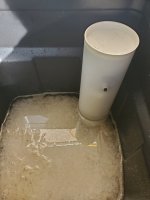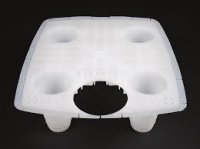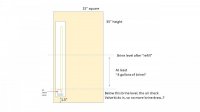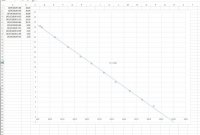Dear members,
I've been much enjoying the content here, and it was very helpful when I was trying to figure out what to set my salt setting and gallons used prior to regen, as well as other things.
I've been having issues where the soft water runs out too quickly. I usually average around 13 days per regen cycle, but I've been running out in about 3-5 days. The system is pretty new, about 5 months old, and my city water hardness is somewhere between 15-21 gpg (the city gets its water from 2 different sources). I thought that maybe the city water got harder all of a sudden maybe.
I noticed today that the brine level in the brine well (the white cylinder where the float is) is about 2" higher than the brine level in the brine tank. I thought that there were slits along the side of the brine well, so that the brine level should be the same in both the brine well and the brine tank? Is there a clog in the slots or something?
Also, I noticed that there were some salt particles on the bottom of the brine well --- I thought that the brine well was a closed cylinder on the bottom, and open on the top (can be closed with white lid)?
I'll eventually empty it out and clean it and everything, but I was just wondering if you guys could tell me if:
1)the brine level difference is ab(normal)
2) the brine well cylinder is closed off on the bottom -- if so, someone either poured salt into the brine well, or it recrystallized inside the brine well somehow because it was supersaturated?
BTW, I'm also getting probably about 24" of brine water level height after a regen cycle. I think that's all the info, it's a Fleck 5600 Econominder. Thanks in advance,
I've been much enjoying the content here, and it was very helpful when I was trying to figure out what to set my salt setting and gallons used prior to regen, as well as other things.
I've been having issues where the soft water runs out too quickly. I usually average around 13 days per regen cycle, but I've been running out in about 3-5 days. The system is pretty new, about 5 months old, and my city water hardness is somewhere between 15-21 gpg (the city gets its water from 2 different sources). I thought that maybe the city water got harder all of a sudden maybe.
I noticed today that the brine level in the brine well (the white cylinder where the float is) is about 2" higher than the brine level in the brine tank. I thought that there were slits along the side of the brine well, so that the brine level should be the same in both the brine well and the brine tank? Is there a clog in the slots or something?
Also, I noticed that there were some salt particles on the bottom of the brine well --- I thought that the brine well was a closed cylinder on the bottom, and open on the top (can be closed with white lid)?
I'll eventually empty it out and clean it and everything, but I was just wondering if you guys could tell me if:
1)the brine level difference is ab(normal)
2) the brine well cylinder is closed off on the bottom -- if so, someone either poured salt into the brine well, or it recrystallized inside the brine well somehow because it was supersaturated?
BTW, I'm also getting probably about 24" of brine water level height after a regen cycle. I think that's all the info, it's a Fleck 5600 Econominder. Thanks in advance,




